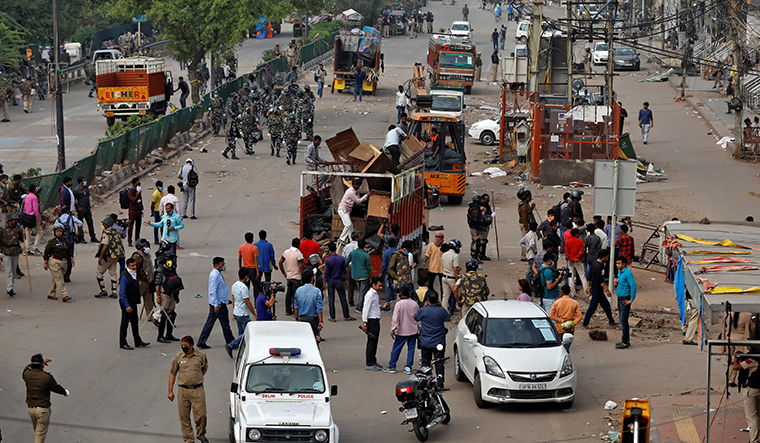When the rest of the country stayed indoors on the day of the Janata Curfew, Delhi’s Shaheen Bagh still showed up. Five women came to mark their presence that Sunday after Covid-19 restrictions had caused the protesters to disperse, leaving behind their slippers on wooden benches. Then, an unidentified person hurled a petrol bomb without any ostensible provocation.
As Delhi went into lockdown on Monday, around 15 to 20 angry women continued the protest, virus be damned. The assistant commissioner of police arrived, telling them to clear out. The following day, March 24, when the anti-Citizenship (Amendment) Act protest completed 100 days of its existence, the blow fell. The police forcefully removed all protesters and their property at 7:30am.
Ask Beevi Asma Khatun, the 90-year-old “Dabangg daadi” from Shaheen Bagh and one will know that even the pandemic is no match to the spirit of resistance here. “That Sunday when they threw the bomb, I was in my house. But that day, I could not hold myself back,” Asma thunders on the phone. She left her home to demand an explanation from the police. “Whatever Modi told us to do, we did. We reduced our numbers, kept a distance, wore masks and used sanitisers. We even clapped our hands on Janata Curfew day. Did he do anything to listen to us?” she said. She is certain that curfews and Covid-19 are excuses and smokescreens, and shoots off a warning: “We are people of Shaheen Bagh. We are sher (lion) and bagh (tiger). You wait and watch. If we can’t restart our movement after the curfew, there will be war.”
Also read
- Indian consumers cautious about spending amid COVID-19 crisis: KPMG
- After US, India has done most COVID-19 tests: White House
- Karnataka minister's wife, daughter test COVID-19 positive
- Man posing as plasma donor arrested for duping Delhi Assembly Speaker
- Kejriwal analogises the fight against COVID to the strife in Ladakh
- Lufthansa offers to fly empty planes to India and carry passengers on outbound flights only
- Google Maps to alert on Covid-19-related travel restrictions
The women of Shaheen Bagh have led the movement from the front. It started out as sit-in protest in December 2019, in the wake of police excesses in Jamia Millia Islamia to muzzle student resistance, and became the poster project against the CAA. And no virus can nullify what their movement has already achieved.
“Kabhi goli toh kabhi bomb toh kabhi virus (Sometimes it is bullets or it is a bomb or it is the virus),” says 28-year-old A. Fatima. “The most amazing thing about Shaheen Bagh is the many friendships we made.” Fatima plans to tap into these networks at the microlevel. “We will gather in groups of five in each other’s houses, and will shout slogans against CAA-NPR-NRC from our balconies,” she says.
A.R. Khan, who has a small business in computer parts, has seen his fellow protesters survive the severest December chill Delhi has ever seen. “Who is scared of coronavirus then?” he says. Khan left his job and his family, including a one-year-old daughter, to camp at Shaheen Bagh since December. He makes an appeal: “The protesters here were my blood relations. This was my home. How can you throw us out of our home?”


